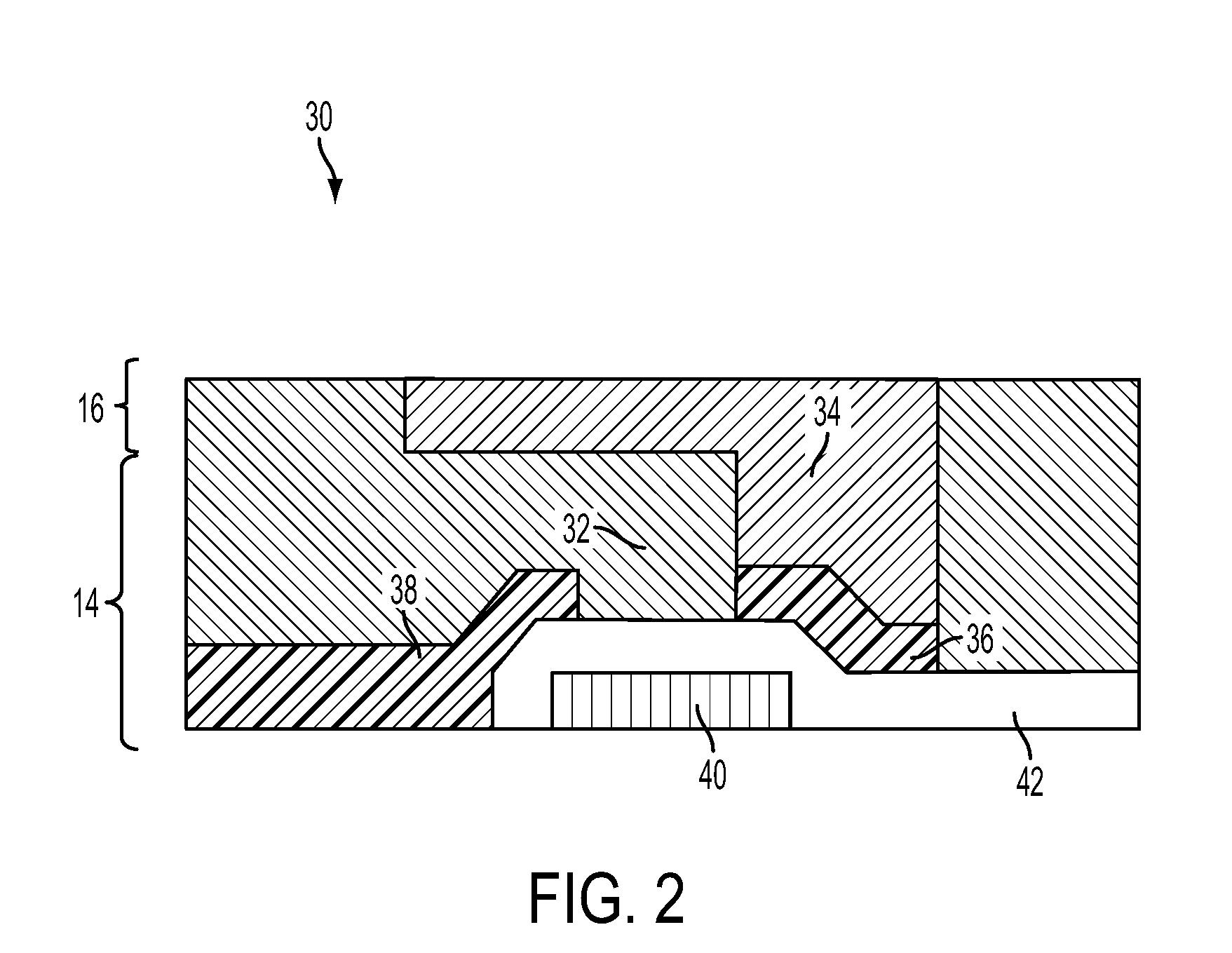Photoreceptor with a TFT backplane for xerography without a ROS system
a photoreceptor and xerographic system technology, applied in the field of latent image formation in xerographic systems, can solve the problems of low charge mobility, sensitivity to light shock, and not the only possible way to generate latent images, and achieve the effect of facilitating forming latent images and facilitating forming latent images
- Summary
- Abstract
- Description
- Claims
- Application Information
AI Technical Summary
Problems solved by technology
Method used
Image
Examples
Embodiment Construction
[0017]In accordance with various features described herein, systems and methods are described that facilitate using a TFT backplane with discharged area development (DAD) for latent image formation (e.g., whereby discharged area(s) on the imaging member surface correspond to an image on a print medium, and charged areas correspond to background). The described systems and methods facilitate forming latent images without the direct coupling of a high-voltage power source (HVPS) to the surface of the imaging member.
[0018]The described innovation eliminates a need for a raster output scanner (ROS) or laser when generating a latent image on a photoreceptor. The innovation employs a light emitting diode (LED) light source to charge a charge transport layer on a photoreceptor, and an addressable backplane comprising an array of field effect transistors (e.g., silicon or organic thin film transistors, or TFTs), wherein each TFT corresponds to a single pixel on the photoreceptor surface. La...
PUM
 Login to view more
Login to view more Abstract
Description
Claims
Application Information
 Login to view more
Login to view more - R&D Engineer
- R&D Manager
- IP Professional
- Industry Leading Data Capabilities
- Powerful AI technology
- Patent DNA Extraction
Browse by: Latest US Patents, China's latest patents, Technical Efficacy Thesaurus, Application Domain, Technology Topic.
© 2024 PatSnap. All rights reserved.Legal|Privacy policy|Modern Slavery Act Transparency Statement|Sitemap



